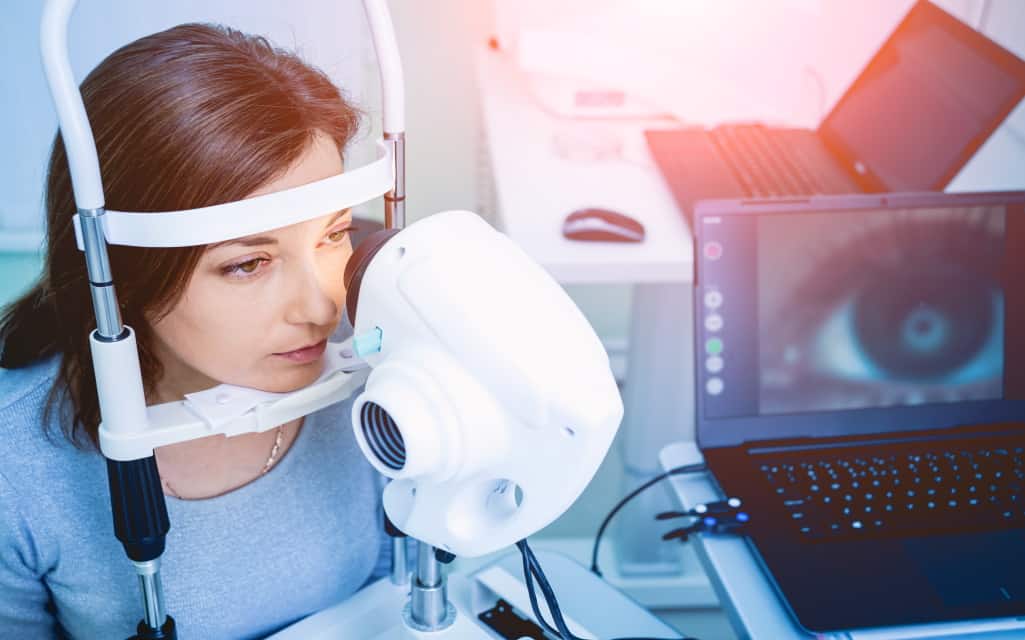What does LASIK stand for?
Laser-assisted, in situ Keratomileusis (LASIK) is a form of refractive surgery that treats nearsightedness, farsightedness and astigmatism (blurred sight). An ophthalmologist or eye doctor performs LASIK as an outpatient procedure. LASIK surgery can improve vision by using a laser to reshape a patient’s cornea. The cornea is an eye part that helps to focus light rays onto the retina. The image you see can be blurred if the cornea or eye shape isn’t perfect. This is where LASIK surgery might be an option to improve your vision.
Why Is LASIK done?
LASIK’s goal is to correct your refractive error and improve your vision.
Good vision is essential for all activities, including reading, driving, gardening, and playing with children. LASIK is a popular procedure that improves your vision and reduces the need for contacts and glasses. 95% of patients are happy with their results. This is not surprising considering that 90% of patients end up with vision levels between 20/20-20/40.
You probably have contact lenses or glasses if you are considering LASIK surgery. Your eye doctor will discuss with you whether LASIK or another similar refractive option is an option for you.
How is LASIK done?
You will meet with an eye surgeon or coordinator before LASIK. They will discuss what to expect after and during the procedure. They will ask you about your medical history, and perform a complete eye exam. They may also perform tests to determine the thickness and refraction of your eyes, as well as eye pressure. The surgeon may also map your corneas or dilate your pupils. Any questions you might have, the surgeon will be happy to answer them. Next, schedule an appointment to have the surgery.
Laser eye surgery can be performed in an outpatient center or at your ophthalmologist’s office.
A special laser cutting tool is used during LASIK surgery to modify the shape of the cornea (the dome-shaped clear tissue in front of your eyes) to improve vision.
Simply put, your ophthalmologist will alter the shape of your cornea to ensure that light hits your retina correctly.
The cornea is an eye part that helps to focus light and create images on the retina. The cornea works much like a camera lens, focusing light onto the retina to create images on film. Refraction is the act of bending or focusing light. The shape of the cornea or the eye is not ideal and the image on the retina may be blurred or distorted. These errors in the focusing power are known as refractive errors. Contact lenses and glasses are made to correct the imperfections in the eyes. Refractive surgery is a surgical procedure that improves the eye’s focusing power. LASIK surgery involves the precise and controlled removal corneal tissue using a special laser. This changes the cornea’s focusing power.
What happens during LASIK eye surgery?
The LASIK surgeon will first inject anesthetic drops into the eyes of the patient. Next, the surgeon will place a thin, hinged flap on the cornea. The cornea surgeon will then fold the flap back and use a laser to reshape it. This is how you can have better vision. During the procedure, the LASIK surgeon will monitor your eyes and direct the laser. After the cornea has been reshaped the LASIK surgeon will return the cornea’s flap to its original position, where it can heal naturally without the need for sutures. LASIK eye surgery takes approximately five to fifteen minutes.
The suction ring that is placed on the eye before you cut the corneal flap can cause pressure and your vision could become blurred.
Your eye surgeon can reshape parts of your cornea using a program led laser. A tiny amount of corneal tissue will be removed with each pulse of the laser beam. The surgeon then places the flap in its new position after reshaping it. The flap heals normally without the need for stitches.
LASIK Outcomes
Clear sight is possible in a matter of minutes. Patients who have had LASIK will see a significant improvement in their vision within a matter of hours. You will usually see results within 24 hours. Most activities can be resumed within 48 hours.
People who undergo LASIK are more likely to see long-term benefits.
If the process of LASIK surgery causes you discomfort, it’s normal. Nobody likes the idea of a laser touching their eyes. It might be comforting to know that LASIK has been proven safe and there are very few long-term side effects.
There are risks associated with all surgeries. Side effects of LASIK eye surgery are very likely. However, they typically last for about a month. Some people may experience side effects for a shorter time while others might have to wait longer.
There are pros and cons of LASIK and you must meet certain criteria in order to be eligible. Talk with your ophthalmologist about the pros and cons of LASIK eye operation and set realistic expectations about what LASIK can accomplish for you.
To learn more about LASIK, including the risks and side effects, schedule a consultation at our LASIK Nashville office to receive a free evaluation. This will ensure that you are a suitable candidate for LASIK.



